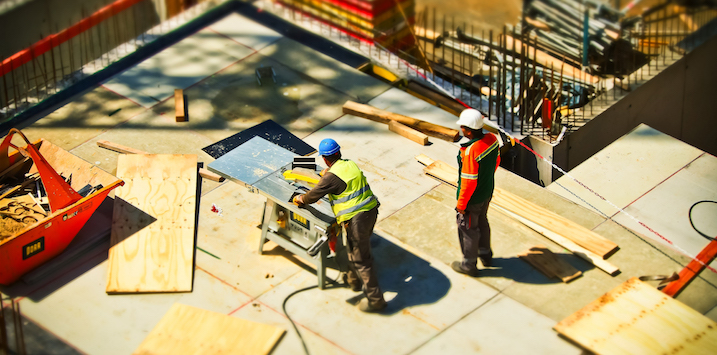
Poor builder results signal more property pain ahead
Property investors expecting a recovery in prices will have to wait a bit longer. Because, right now, a perfect storm is engulfing the sector, leading to the worst property falls in four decades. Recent results from our leading builders are further confirmation that the trend is still down.
Fuelling the worst Australian property declines in 40 years and the steepest Sydney slide in two decades has been an evaporation of foreign and domestic buyers. Business and property investor concerns about election outcomes is also unhelpful as elections typically have an adverse impact on housing activity. There will be three elections this financial year, VIC, NSW and Federal.
Coordinated global house price falls currently being experienced suggest Australian housing activity and price declines have little to do with elections.
Back in the March quarter of 2017 Australian Deposit Taking Institutions (ADIs) wrote $32.4 billion of interest-only housing loans (the loan typically sought by investors). Fast forward to the September quarter – the most recent quarterly data we have from APRA – and just $14.4 billion of interest-only loans were written. With just half the number of loans being extended to borrowers, one cannot expect house prices to rise. Of course, this leads to lower levels of house sales (new house sales are now at 17-year lows). In turn, lower house sales mean lower construction and renovation activity.
The latest data to be released and published by UBS reveals December 2018 Australian Home loans plunged six per cent from November and slid 20 per cent from year-earlier levels. These are nearly the worst monthly declines since the GFC and levels are now the lowest in five years.
Importantly, investor loans are down 28 per cent year-on-year, owner-occupier loans are down 16 per cent and first home buyers retraced sharply after previously recovering (-8.0 per cent m/m, -12.0 per cent y/y)
Property investors expecting a recovery in house prices will have to wait some time. There are simply fewer people interested in your property and the dearth of buyers means anyone seriously considering buying can take their time.
With the construction industry the third largest employer in Australia, deteriorating housing activity has implications for unemployment and economic growth. As we have warned in recent years, property developers and home builders should be directly and adversely impacted. We have recently seen two builders release their half year results that validate those warnings.
Back in December, home builder Villaworld (ASX:VLW) downgraded its earnings guidance stating it would not achieve FY2019 guidance for net operating profit after tax (NPAT) of c.$40 million. With rapidly deteriorating conditions, the Royal Commission and ALP proposals to change negative gearing terms, the company understandably refrained from providing updated guidance.
Fast forward to last week and VLW reported HY19 Revenue of $235 million and NPAT of $17.6 million again electing to refrain from providing guidance for the full year.
The company noted that conditions worsened in the December quarter and the sale of 517 lots was more than a third lower than the December Quarter 2017. For the first half of 2019, 440 lot sales were achieved, which compares unfavourably to the 963 sales achieved in 2H18 and 715 lots in 1H18.
Villaworld cited tightening credit conditions, high prices and a loss of consumer confidence in the housing market.
Importantly, analysts still believe that the weakness could last “another few months,” without explaining what will change between today and May 2019. The presence of hope in the absence of a positive catalyst suggests further downgrades, remain likely.
Over at AV Jennings (ASX:AVJ), weaker economic and housing conditions have also contributed to declining sales and margins. AVJ reported 1H19 revenue of $113 million, down almost 40 per cent from the $184 million reported in 1H18. Net Profit Before Tax of $2.2 million is down 90 per cent from the $22.4 million reported in the prior corresponding period. The company has said that investors should expect a strong skew in sales and profit to the second half of the financial year because it is switching to selling less land and more complete houses which means a longer sales cycle. The company has also explained the weaker numbers are partly due to some delays to projects and an accounting change which causes a delay in the recognition of revenue from builder sales.
The company appears to be painting a more positive picture than Villaworld despite the fact it exists in the exact same ecosystem. AVJ’s analyst pack highlighted “strong” economic indicators including population growth, stable employment and low interest rates.
Someone might yet explain to AVJ that the population of the US was growing before house prices plunged up to 80 per cent in 2008/09. It’s also worth pointing out that stable employment and low interest rates mean nothing amid record household debt and fears of declining property prices.
In the past investors have done well buying builders below NTA and selling them well above. This cycle will probably be no different but some patience is warranted given the factors causing the declines have yet to stabilise.
All the talk around Australia’s falling property values seems strange to me, as much as the massive rallies we have witnessed!
All I know is they are not worth the money they were and are making presently and need to return to a more realistic level, cry’s about the effect on the economy is simply a manufactured consumption boom that is not sustainable and fingers will be burnt and rightly so.
The Aussie dream has been slaughtered!!!
Thanks for sharing Stephen.